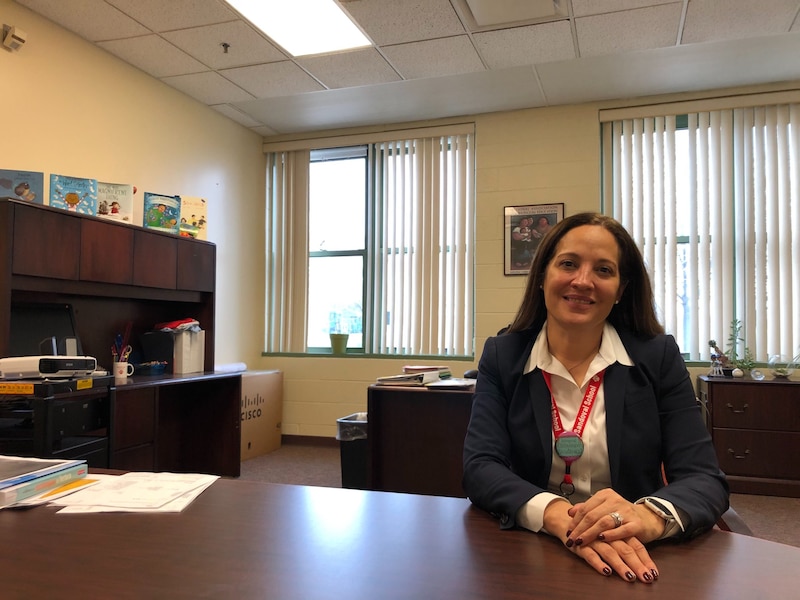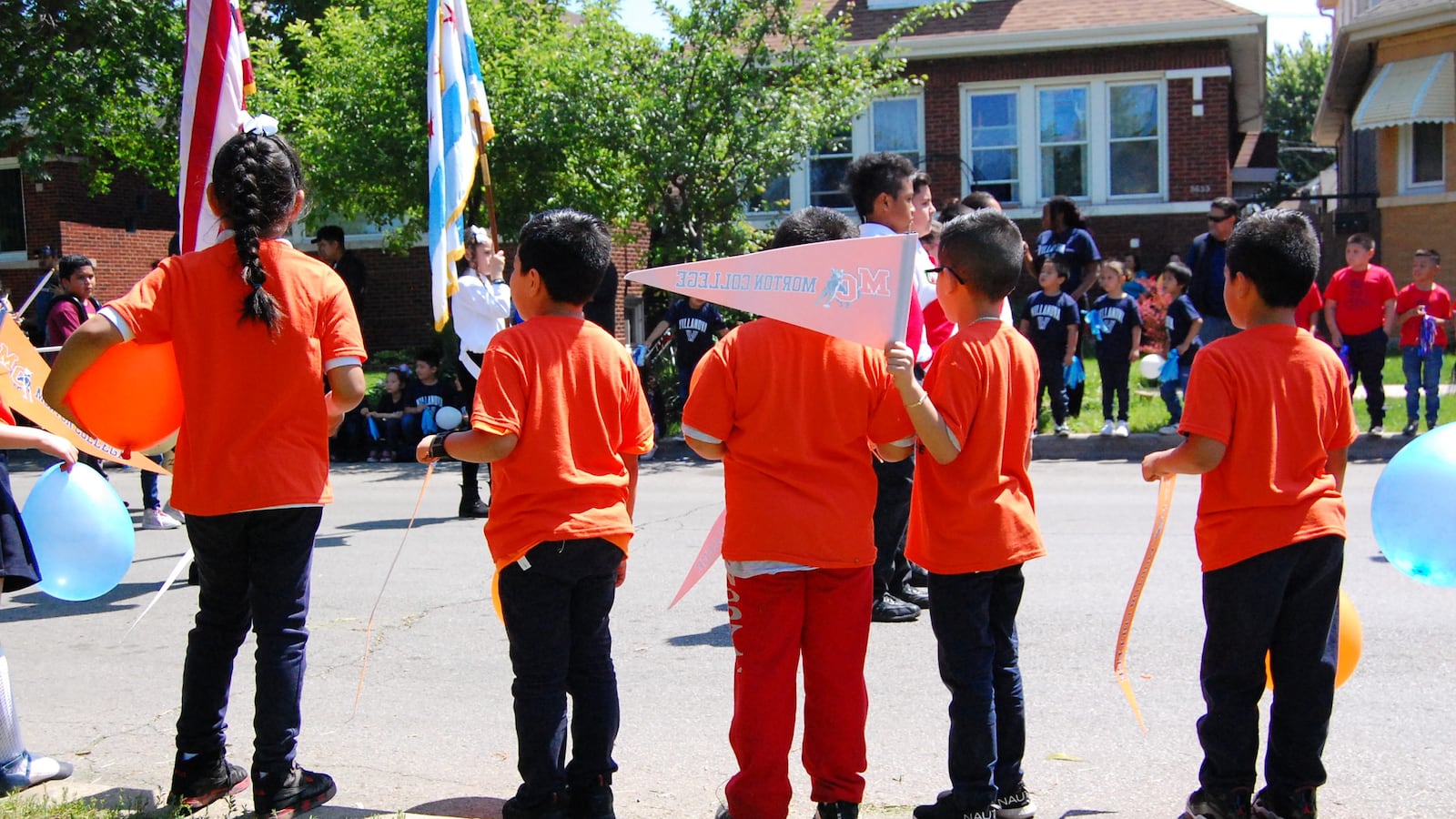Wilma Milagros David knows that her bilingual students at Sandoval Elementary in Gage Park are working hard. As principal she sees them at school, improving in math or focusing on work even when they may be tired or have trouble at home.
But the progress David sees her students make hasn’t always shown up in the research about bilingual students.
A report released Tuesday from the University of Chicago Consortium on School Research bears out what David has observed. It found that over time, most English language learners see similar academic gains — and even better attendance — than their English-speaking counterparts.
By tracking a group of English language learners over several years, even after they are no longer in a bilingual program, the report found that those who entered Chicago Public Schools in kindergarten or first grade and got the swing of their new language saw gains on standardized tests similar to students who were fluent English speakers.
But those who still had not met English proficiency by fifth grade struggled, especially ahead of high school.
With one-third of Chicago students classified at some point in school as English language learners, the data could help the district target support for them. As enrollment shrinks, the proportion of English language learners in the district has grown from 13% of students in 2010 to almost 20% in 2019.
The report found that more than 76% of English language learners who entered kindergarten in Chicago schools became skilled in English by fifth grade. By eighth grade, those students had higher attendance, growth on math tests, and grades in core courses than their peers considered fluent in English.
That lined up with David’s view from the classroom: that many English language learners could overcome challenges over a period of years. “It just really validated my core belief of the impact that bilingual education has,” she said.
Chicago’s findings come about 18 months after a national study by professors from New York University and Oregon State University in the journal Educational Researcher. It showed that multilingual students made greater academic gains than did their English-only peers on the nationally standardized NAEP test, which Chicago students take every two years.
Still, the Consortium report showed that English learners’ proficiency in math and reading lagged those of their English-speaking counterparts. But those who began learning English by first grade posted math scores only about 5 percentile points lower than their fluent peers. In English, the gap was greater, but English learners scored higher gains, thus narrowing the gap by half by eighth grade.
Not all students get over the hump. The Consortium study showed that students who struggle to learn English in their first years in Chicago schools fall behind by eighth grade, a sign that could spell trouble for their efforts to graduate from high school.
The one-fifth of Chicago students who started kindergarten in bilingual education classrooms and didn’t become proficient in English by the end of eighth grade also struggled with attendance, low grade point averages, and low marks on the district’s Freshman on Track measure that assesses how a student is moving toward graduation.
That group of students was most likely to be classified as diverse learners — the district’s term for special education students — and to be male.
In the past, Chicago has struggled to keep up with English learners’ needs. A 2017 investigation by the Chicago Reporter found that hundreds of Chicago schools lacked trained bilingual teachers and learning material in students’ native language.

To help the students who are struggling, the report suggests determining as early as first grade which students need extra help by reviewing standardized test scores in English proficiency.
That could help students who enter school in lower grades, but not those learning English when they are older. Previous research from New York City highlights a critical point: Younger students make the most progress — while older English learners face higher barriers.
Jorge Macias, Chicago’s head of Language and Cultural Education, admits that supporting students who enter high school without a firm grasp of English is an area where “we have some challenges.”
“They don’t have five or six years, they are coming in with two or three years before they graduate,” Macias said. The school district tries to make sure that those students receive credit for any schooling they had before, and have access to bilingual teachers for extra help. Even as this year’s budget gave a boost for English learner staff support positions, the district has struggled to attract qualified bilingual teachers.
Looking forward, researchers at an event held to publicize the report at Sandoval on Tuesday said they would love to see data on how English language learners do through high school and after they graduate.
David, the principal at Sandoval, knows personally the struggles of English language learners. When she moved from Puerto Rico to Chicago in third grade, she entered a bilingual class at Oscar Mayer Elementary in Lincoln Park.
Today, she’s helping other English language learners survive, and thrive, in the Gage Park neighborhood school, whose student body is 97.4% Latino. At Sandoval Elementary, the student body is 93.6% low-income and 58.4% English language learners. But it is performing above the district average for growth in math and reading on the MAP test.
“To me, there were always misconceptions from my own experiences as a student and bilingual teacher” that showed bilingual students as underperforming, David said.
She said sees the whole school learning a new language: academic English.
“We first have to build on the native language skills because we know those skills will transfer over,” David said. “It’s about balancing: I need to develop those skills in the native language and also focus on that transition to English and that academic language.”
Corrected: A previous version of this story stated that English language learners scored higher in math on standardized tests than did native English speakers. Their growth scores — how much they gained annually — kept pace with those of native English speakers.

